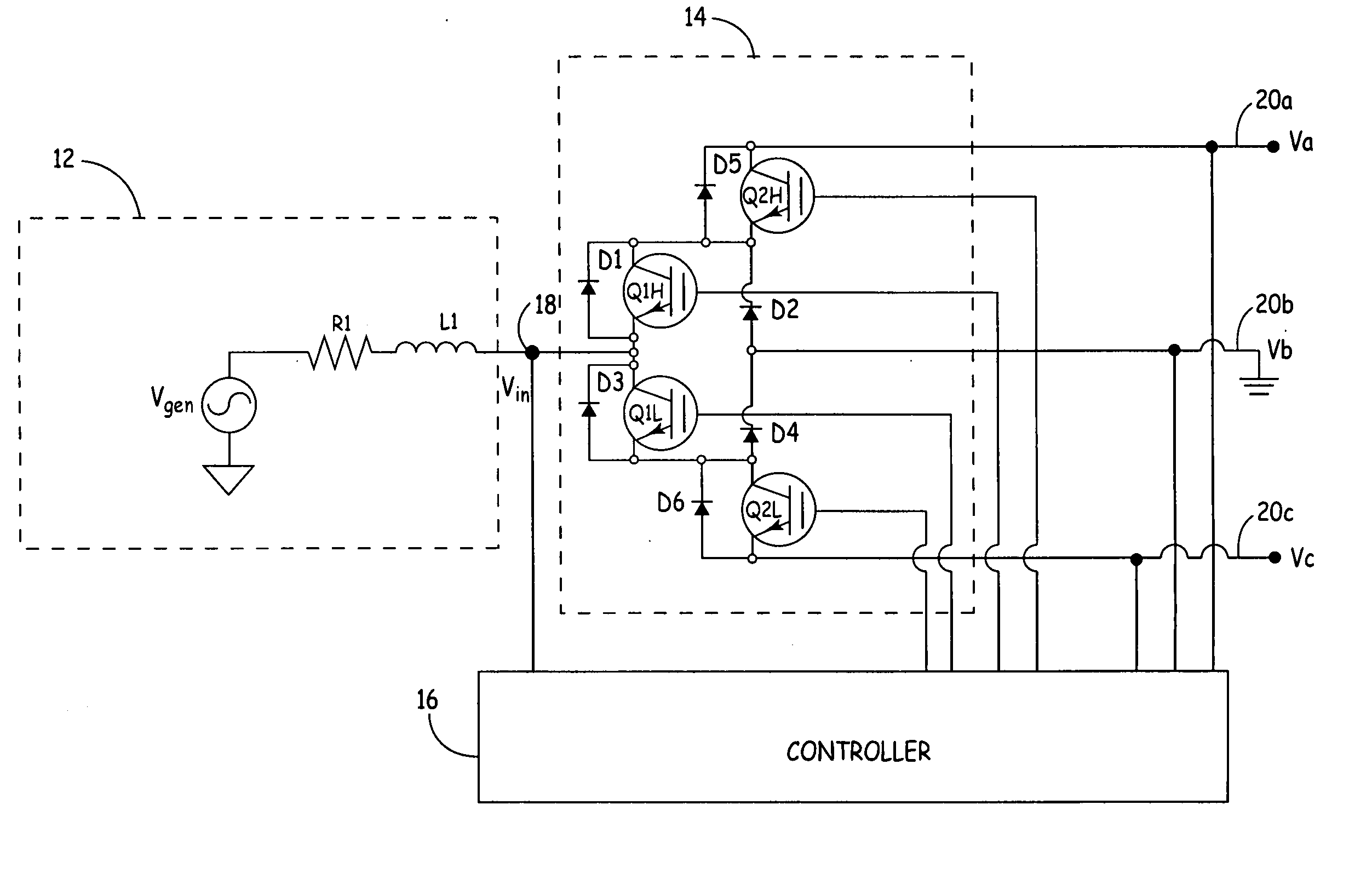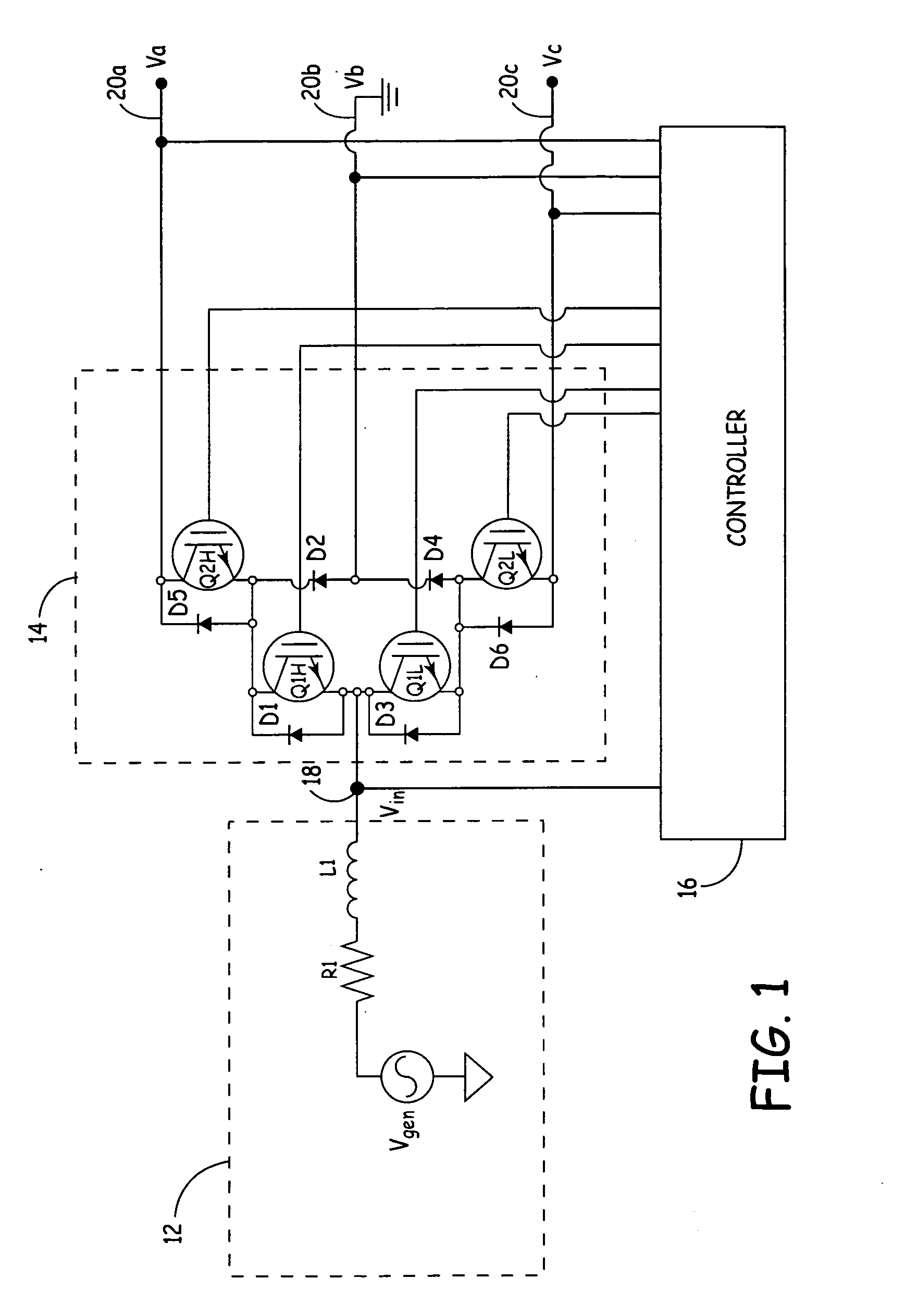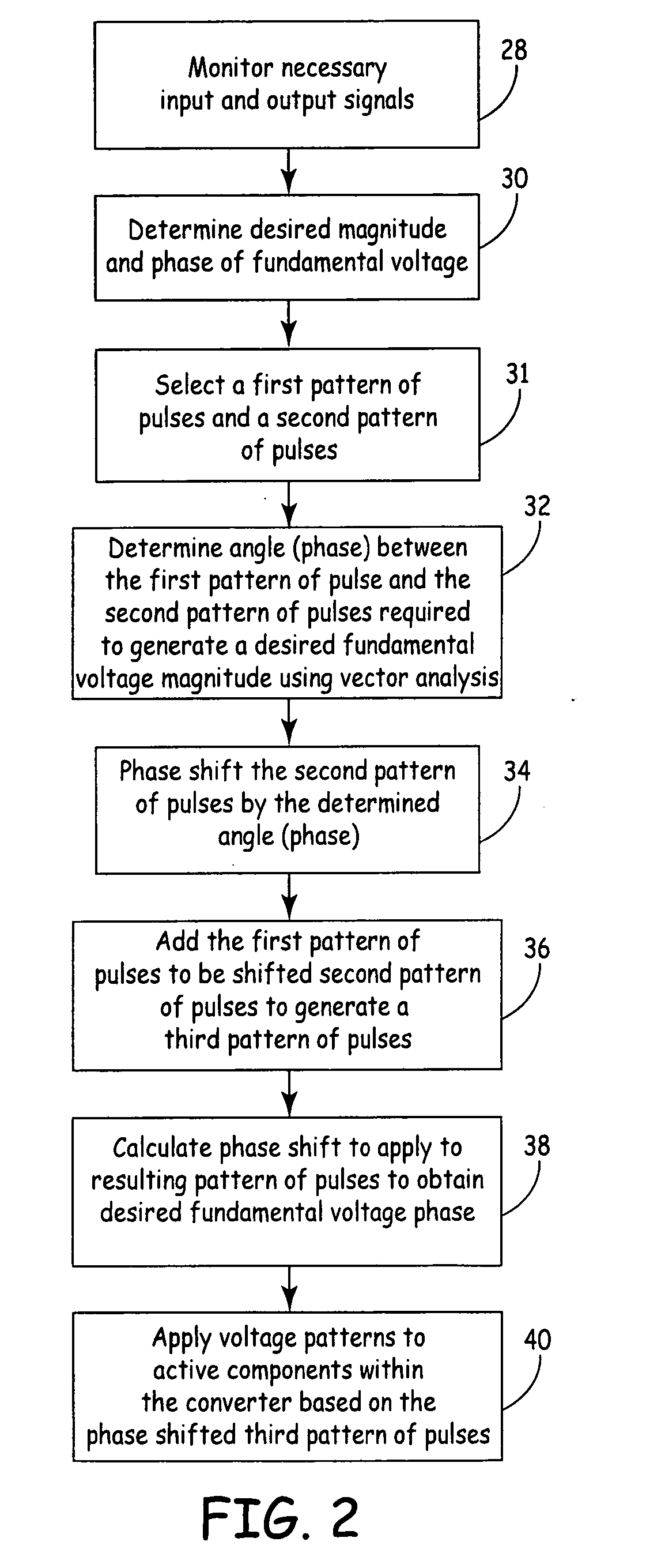Voltage control and harmonic minimization of multi-level converter
a multi-level converter and voltage control technology, applied in the field of power generation systems, can solve the problems of harmonic waveforms always representing loss, harmonic waveform generation is particularly expensive in terms of power loss, and the diode rectifier acts as a non-, so as to minimize the generation of harmonics
- Summary
- Abstract
- Description
- Claims
- Application Information
AI Technical Summary
Benefits of technology
Problems solved by technology
Method used
Image
Examples
Embodiment Construction
[0014]FIG. 1 shows a circuit diagram of generator / motor 12, three-level converter 14, and controller 16. To simplify the remainder of the description, the present invention is described in terms of three-level converter 14 operating as a rectifier. If three-level converter 14 operates as a rectifier, then node 18 can be described as input voltage Vin, and terminals 20a, 20b, and 20c can be described as DC output voltage Va, Vb, and Vc (in the case of an inverter, node 18 represents the output voltage, and terminals 20a, 20b, and 20c would act as the DC input). If three-level converter 14 were operating as an inverter (converting DC power to AC power) then generator / motor 12 would be treated as a motor. Therefore, throughout this description, generator / motor 12 will be described as generator 12. As discussed above, the direction power flows through converter 14 dictates whether three-level converter 14 operates as a rectifier or inverter. To further simplify the description, only the...
PUM
 Login to View More
Login to View More Abstract
Description
Claims
Application Information
 Login to View More
Login to View More - R&D
- Intellectual Property
- Life Sciences
- Materials
- Tech Scout
- Unparalleled Data Quality
- Higher Quality Content
- 60% Fewer Hallucinations
Browse by: Latest US Patents, China's latest patents, Technical Efficacy Thesaurus, Application Domain, Technology Topic, Popular Technical Reports.
© 2025 PatSnap. All rights reserved.Legal|Privacy policy|Modern Slavery Act Transparency Statement|Sitemap|About US| Contact US: help@patsnap.com



